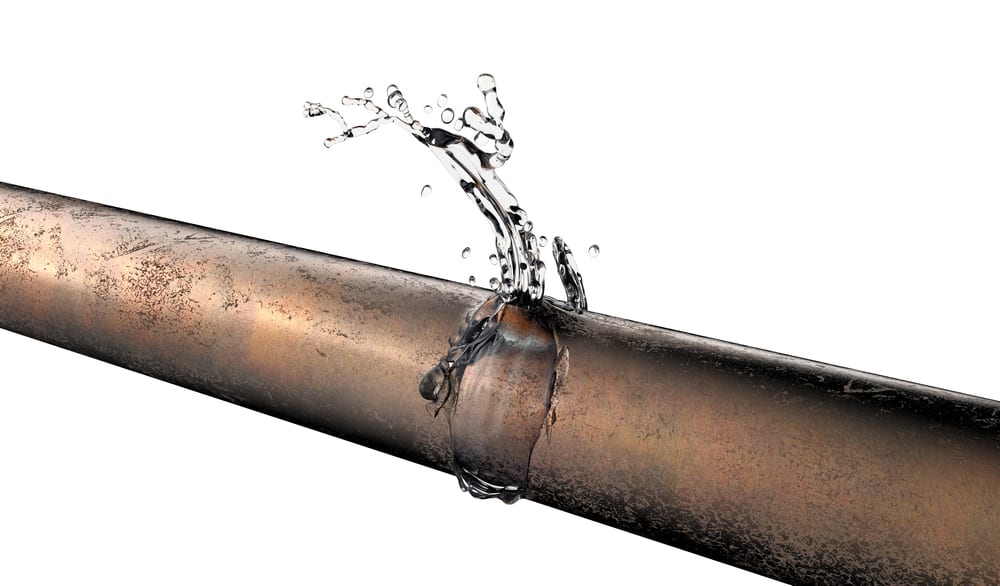Exposing Secret Water Line Leaks: Six Effective Detection Tricks
Exposing Secret Water Line Leaks: Six Effective Detection Tricks
Blog Article
Presented here in the next paragraph you can get a lot of extremely good insights in regards to Finding hidden leaks.

Early detection of leaking water lines can alleviate a possible catastrophe. Some tiny water leakages may not be noticeable.
1. Analyze the Water Meter
Every residence has a water meter. Inspecting it is a surefire manner in which helps you discover leaks. For starters, turn off all the water sources. Guarantee nobody will flush, use the faucet, shower, run the cleaning equipment or dish washer. From there, most likely to the meter as well as watch if it will change. Given that no person is using it, there should be no activities. If it relocates, that indicates a fast-moving leakage. Similarly, if you discover no changes, wait an hour or more and examine back again. This means you may have a sluggish leakage that can even be underground.
2. Check Water Intake
If you spot sudden adjustments, in spite of your usage being the same, it suggests that you have leaks in your plumbing system. A sudden spike in your expense shows a fast-moving leak.
A steady boost every month, also with the very same habits, shows you have a slow-moving leak that's additionally slowly rising. Call a plumber to completely check your residential or commercial property, specifically if you feel a warm area on your floor with piping underneath.
3. Do a Food Coloring Examination
30% comes from toilets when it comes to water intake. Examination to see if they are running appropriately. Decrease specks of food color in the container and also wait 10 mins. There's a leakage between the container as well as bowl if the shade somehow infiltrates your dish during that time without flushing.
4. Asses Outside Lines
Do not fail to remember to check your exterior water lines as well. Ought to water seep out of the link, you have a loose rubber gasket. One little leak can lose lots of water and also increase your water bill.
5. Inspect and also Examine the Situation
House owners ought to make it a behavior to inspect under the sink counters and even inside cabinets for any type of bad odor or mold and mildew growth. These 2 red flags suggest a leak so timely focus is required. Doing regular inspections, also bi-annually, can save you from a major problem.
If you know your residence is already old, keep a careful eye on your heaters, tubes, pipes and so on. Check for stainings and damaging as a lot of pipelines and also devices have a life span. They will certainly additionally normally degrade because of deterioration. If you suspect leaking water lines in your plumbing system, do not wait on it to intensify. Call a professional plumber immediately so you don't wind up with a horrible mess in your home.
Early detection of dripping water lines can mitigate a prospective calamity. Some tiny water leakages might not be visible. Inspecting it is a proven method that helps you uncover leakages. One little leakage can lose heaps of water and increase your water expense.
If you presume dripping water lines in your plumbing system, do not wait for it to escalate.
WARNING SIGNS OF WATER LEAKAGE BEHIND THE WALL
PERSISTENT MUSTY ODORS
As water slowly drips from a leaky pipe inside the wall, flooring and sheetrock stay damp and develop an odor similar to wet cardboard. It generates a musty smell that can help you find hidden leaks.
MOLD IN UNUSUAL AREAS
Mold usually grows in wet areas like kitchens, baths and laundry rooms. If you spot the stuff on walls or baseboards in other rooms of the house, it’s a good indicator of undetected water leaks.
STAINS THAT GROW
When mold thrives around a leaky pipe, it sometimes takes hold on the inside surface of the affected wall. A growing stain on otherwise clean sheetrock is often your sign of a hidden plumbing problem.
PEELING OR BUBBLING WALLPAPER / PAINT
This clue is easy to miss in rooms that don’t get much use. When you see wallpaper separating along seams or paint bubbling or flaking off the wall, blame sheetrock that stays wet because of an undetected leak.
BUCKLED CEILINGS AND STAINED FLOORS
If ceilings or floors in bathrooms, kitchens or laundry areas develop structural problems, don’t rule out constant damp inside the walls. Wet sheetrock can affect adjacent framing, flooring and ceilings.
https://www.servicemasterbyzaba.com/blog/how-to-detect-water-leakage-in-walls/
.jpg)
We hope you enjoyed our post on Locating water leaks. Thanks so much for spending some time to read through our content. Liked our review? Please share it. Let someone else discover it. I am grateful for your time. Visit again soon.
Tap leaks? Inform. Report this page